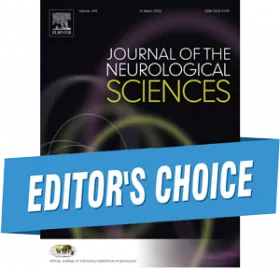
Image: iStockphoto.com/NicoElNino
Authors: David S. Liebeskind
Editor's Choice
Journal of the Neurological Sciences. REVIEW ARTICLE| VOLUME 457, 122906, FEBRUARY 15, 2024
DOI: https://doi.org/10.1016/j.jns.2024.122906
Hemorrhagic transformation (HT) in acute ischemic stroke (AIS) may evolve due to initial ischemia or subsequent reperfusion that occurs spontaneously, or in association with intravenous thrombolysis (IVT) or endovascular thrombectomy (EVT). HT is the most common safety concern in therapeutic revascularization with either IVT or EVT.
Since the introduction of IVT almost 30 years ago, the risk of HT has been a key factor in weighing the relative benefits of revascularization. Over the intervening 3 decades, diverse definitions of HT have been implemented in clinical trials and the routine care of AIS patients. Despite variation and iteration of such HT definitions over time, they commonly employ primary clinical and imaging data obtained at the local hospital, including changes in the NIHSS score and CT or MRI at 24 h. The key focus has been on defining “symptomatic intracranial hemorrhage” (SICH), while ascribing all other forms of hemorrhage as “asymptomatic”.
The simplistic and relative comparison of HT rates between treatment arms of IVT or EVT randomized controlled trials does not establish a causal link beyond simple associations that may be due to stroke severity, poor collateral circulation, duration of ischemia, and multiple treatment effects that can all contribute to an impact on clinical outcomes.
The recent paper by Suzuki et al. provides additional data that suggests that “asymptomatic” ICH (aSICH) after EVT is associated with worse long-term clinical outcomes. Interestingly, regulatory bodies often define serious adverse events in stroke to include evidence of end organ injury, which would implicitly include aSICH. The quandary persists, how can “asymptomatic” HT be linked with a serious adverse event and worse clinical outcomes, whether due to spontaneous recanalization, IVT or EVT? Perhaps, the stroke community is agnostic to ever knowing or realizing the actual causal relationship of HT with respect to individual patient-related factors or specific treatments, including combinations with IVT and EVT. It is also quite arbitrary to designate certain cases of HT as “asymptomatic” when we truly cannot disprove a link with symptoms or long-term clinical outcomes.
In short, it is increasingly clear that our current definitions of HT require an update in 2024. Revision of HT terminology and methodology should reflect the underlying data of such hemorrhages, aligning with the precision medicine of individual patient stroke diagnoses based on initial NIHSS score, ischemic severity on imaging, location of arterial occlusion and collateral status, and corresponding response to therapies such as IVT or EVT, including the impact of revascularization and concomitant vascular complications.








